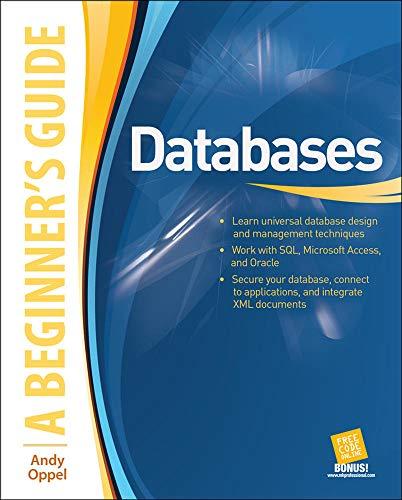Question
Software Engineer Develop dynamic model for Check-out Customer use case using communication diagram or sequence diagram. The dynamic model should show the main sequence and
Software Engineer
Develop dynamic model for Check-out Customer use case using communication diagram or sequence diagram. The dynamic model should show the main sequence and each alternative sequence. The following are interface classes and entity classes for Check-out Customer use case:
Desk Clerk Interface (interface)
Bill (entity)
Room (entity)
Customer (entity)
Card Reader Interface (interface)
Card Receipt Printer Interface (interface)
Bill Printer Interface (interface)
Bank Interface (proxy or interface)
You can use new classes (e.g., control or business logic class) for the dynamic model of Checkout Customer use case if needed.
Use case: Check-out Customer
Summary: A customer checks-out the hotel.
Actors: Desk Clerk, Customer, Bank
Precondition: Customer had checked-in the hotel.
Description:
1. The desk clerk inputs a room number for check-out.
2. The system displays the bill including the total amount for payment.
3. If the customer pays it with a credit card, the customer swipes the card on the card reader. The system requests charging the amount from the bank. If the card payment is successful, the bank returns a reference number and the system prints out the receipt through the card receipt printer.
4. The system updates the payment information on the bill.
5. The system releases the room allocated to the customer.
6. The system removes the customer information.
7. The system prints the bill via the bill printer.
Alternatives:
Step 3: If the customer pays it by debit card, the customer swipes the card on the card reader and enters a PIN, and then the system requests charging the amount from the bank. The bank returns a reference number to the system if the PIN is valid. If the PIN is invalid, the system allows the customer to enter another PIN numbers three times. If payment is successful, the system prints out the receipt through the card receipt printer.
Step 3: If the customer pays it by cash, the desk clerk inputs the amount to the system.
Step 3: If customer payment is not successful, the desk clerk asks the customer another payment type.
Postcondition: A customer has checked out.
Step by Step Solution
There are 3 Steps involved in it
Step: 1

Get Instant Access to Expert-Tailored Solutions
See step-by-step solutions with expert insights and AI powered tools for academic success
Step: 2

Step: 3

Ace Your Homework with AI
Get the answers you need in no time with our AI-driven, step-by-step assistance
Get Started


